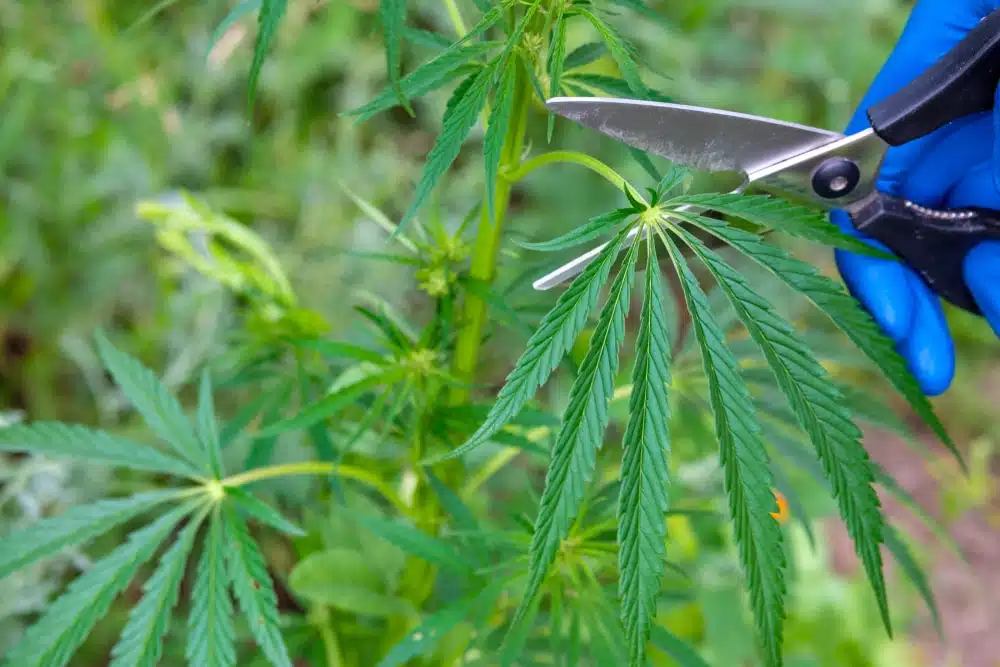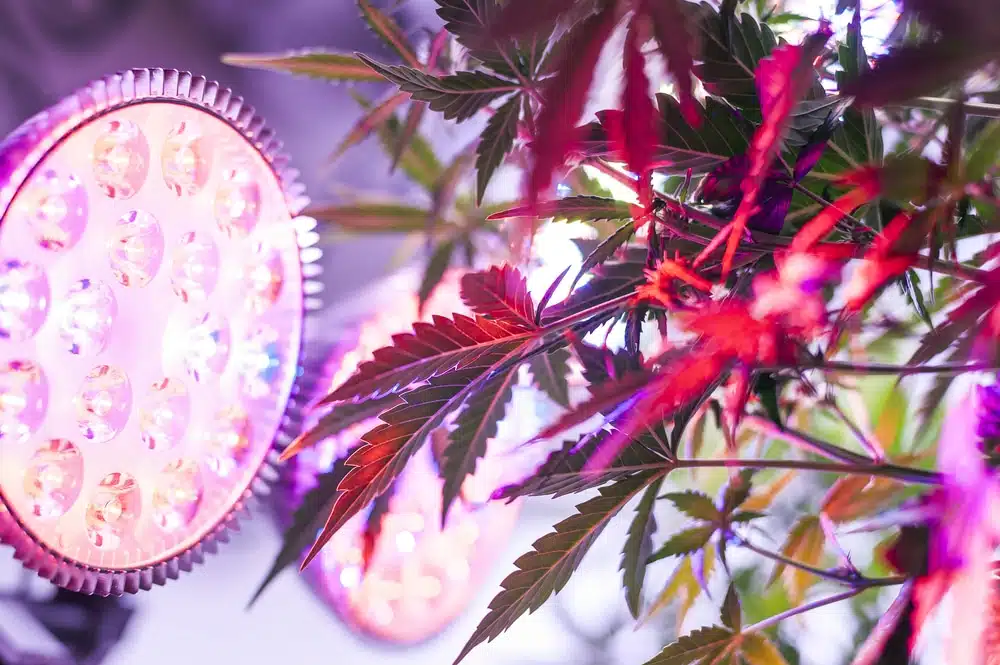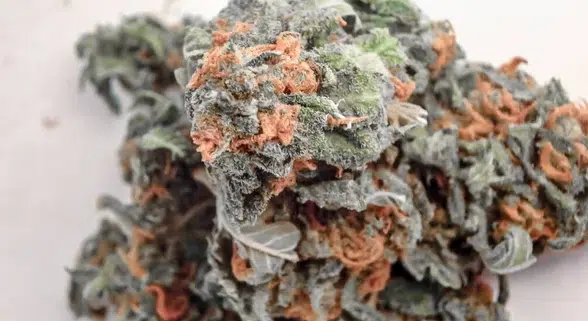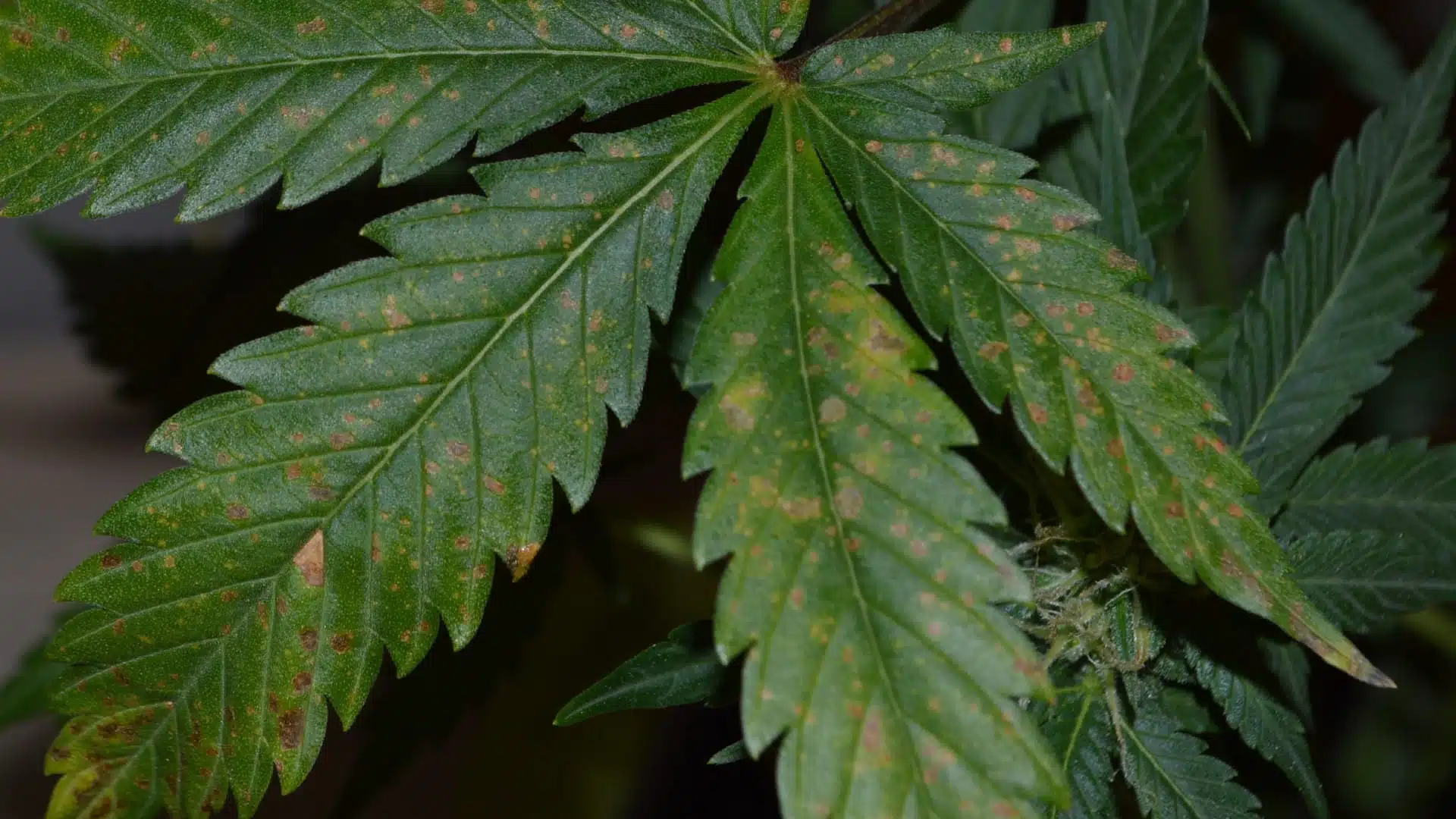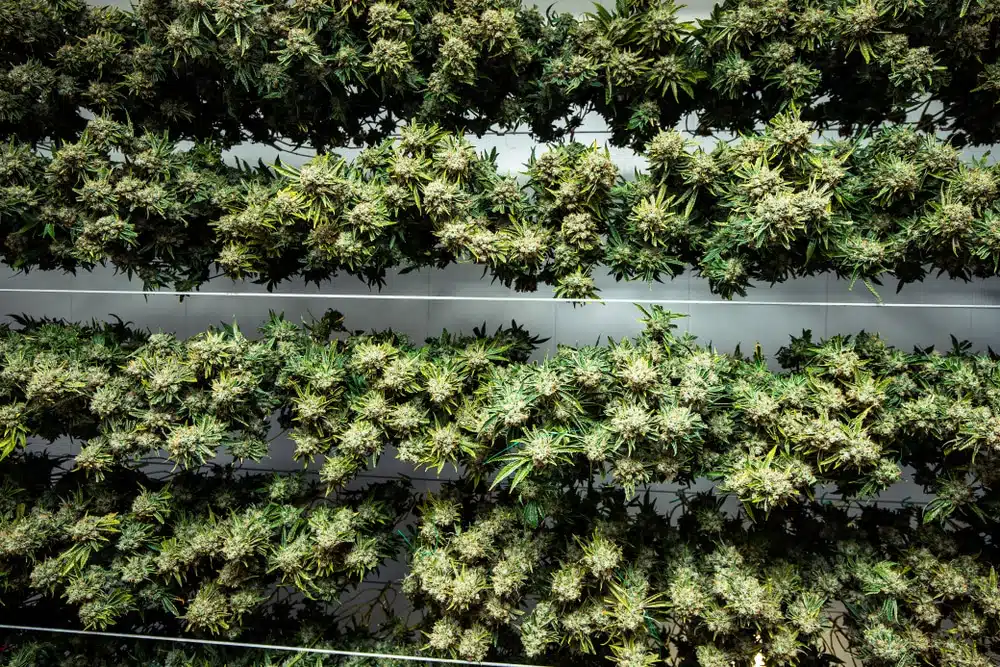Cannabis Fan Leaves: More Than Just Greenery!
Have you taken the time to inspect your cannabis fan leaves? These gorgeous 5–7 pointed leaves on your cannabis crop are more than just decorative greenery.
Although defoliating, pruning, and trimming are all vital in promoting larger, healthier yields, weed fan leaves may offer mild recreational benefits. As a result, discovering the different ways to groom your crops without causing any damage down the line is crucial.
Learn how to defoliate your marijuana plants correctly and find out what to do with the excess leaves.
Let’s dive in.
What are cannabis fan leaves?
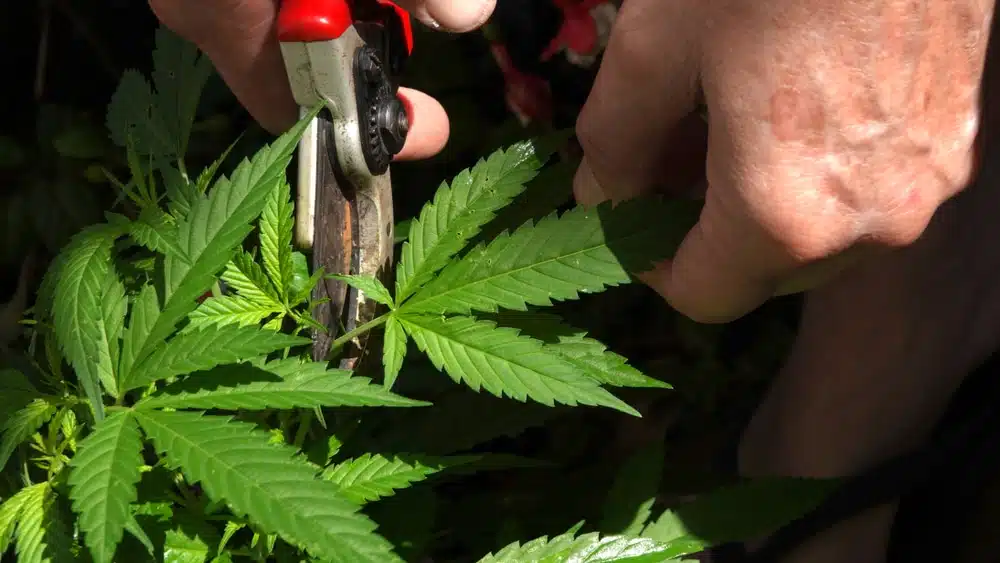
The fan leaves on a weed plant store chlorophyll and provide food and nutrients to the rest of the crop. They contain low THC levels, generally not enough to bring the well-known, well-loved psychoactive effects.
Fan leaves are the primary identifier of weed plants. You notice them on most weed paraphernalia out there. Their main function, besides looking pretty, is to help the plant develop top-notch, healthy buds.
Cannabis leaves are prone to mold and pests, with the exception of certain cultivars. You may need to learn how to get rid of powdery mildew if you have a strain that struggles with decay. Pruning is one of the recommended ways to prevent lasting damage.
The fan leaf anatomy
Cannabis fan leaves consist of a petiole, apex, ventral surface, and dorsal surface. Each section of the leaf has different functions, from holding it together to absorbing chlorophyll from the light source.
Petiole
The petiole is the leaf stem that connects to the plant stalk. It can be long or short, depending on the strain. Indica variants have wider, shorter leaves compared to sativa varieties, which are long and thin.
Apex
The apex is the very tip of the leaf where water droplets accumulate. This protruding part of the frond aids in the drainage of excess moisture.
Ventral surface
The ventral surface refers to the part of the leaf that faces up toward the light source. It’s also known as the adaxial surface and is generally a bright green color. This part of the anatomy stores chlorophyll, which feeds the plant.
Dorsal surface
The dorsal surface is on the opposite side of the ventral surface, underneath and facing away from the light source. It has less chlorophyll compared to its counterpart and stores small amounts of water.
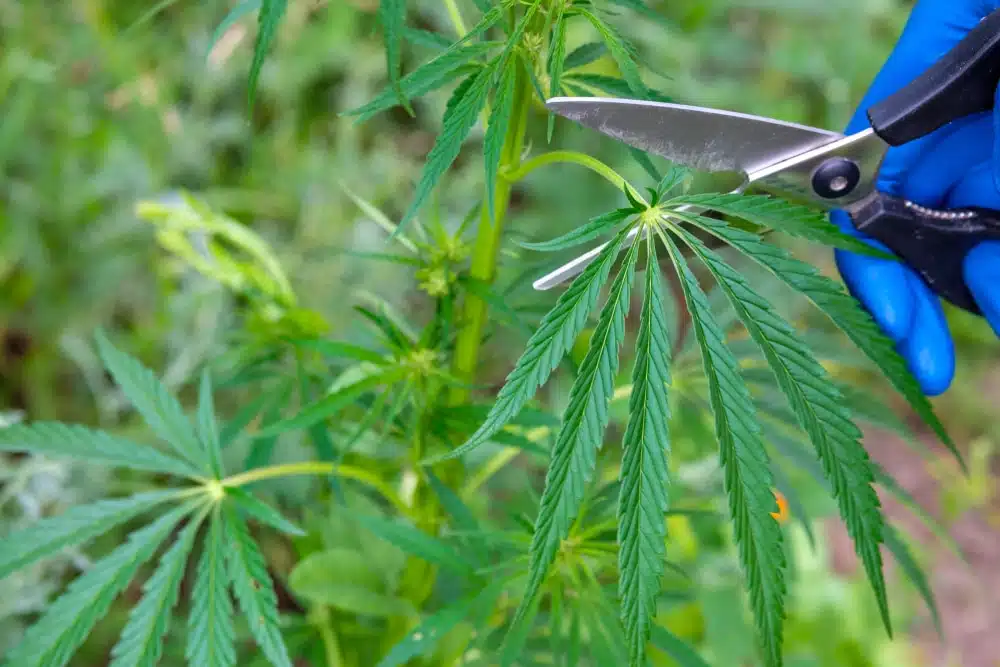
What do fan leaves do?
Just like mitochondria in cells, fan leaves are the powerhouse of the marijuana plant. They’re in charge of photosynthesis; using water, sunlight, and carbon dioxide to create energy and oxygen for the blooming process.
Contrary to what you may think, larger doesn’t always equal better. If the leaves grow too big, they may block light and airflow to the lower branches, especially in outdoor conditions. Medium-sized leaves are ideal as they store more chlorophyll and cause less shade.
Can fan leaves make you high?
The entire cannabis plant is full of cannabinoids due to the resin glands that cover the surface. The fan leaves contain minimal amounts of THC and CBD. Theoretically, you can smoke almost any plant, and the same goes for fan leaves.
Only trace amounts of the desired cannabinoids are found in the fan leaves. You would need to ingest a high amount to feel the psychoactive effects. The leaves generally have around 0–4% THC, contrasting the rough estimate of 15–30% in the buds.
If you look closer at the fan leaves, you may notice tiny trichomes that contain THC, known as sugar leaves. If you have a low tolerance to weed, you could potentially get high from ingesting the fan leaves.

What’s the best time to remove fan leaves?
Pruning a marijuana plant is often necessary for the growing process, depending on the strain and conditions. It’s essential to understand how trimming works to have the healthiest plants possible.
Over-stressing the plant may have detrimental results. Trim the highest priority leaf sites first before attending to the entire crop for ideal results.
Wait a week or two between pruning to not overwhelm your plant. If you don’t trim the higher-up leaves, you may need to attend to cannabis light burn.
Defoliating fan leaves during veg
Pruning is often required during the vegetative stage. Around the second week of vegging, once the baby leaves begin to appear, the plant is ready for the first trimming session.
Since the leaves grow fast, there’s a higher chance of the lower foliage not receiving enough sunlight or airflow. Remove the larger leaves at the top to allow for light to reach the entire crop. Once the plant receives more illumination, it enters the flowering stage.
A decrease in leaf growth is one of the first signs of the flowering stage.. Now’s the time to turn pruning into more of a maintenance task.
Defoliating during the flowering stage
If you skipped out on pruning during the vegging phase, you might have issues during the flowering stage. Once the plant starts blooming, another round of defoliating is due. Buds won’t develop efficiently if the leaves don’t receive enough light.
Look for signs of decay on the foliage to know which ones to remove. If you notice brown spots on your weed leaves, remove them as soon as possible. Cultivators often only trim the plants in the first two weeks of the flowering stage.
The best way to remove fan leaves
While removing fan leaves is often necessary, you may wonder what the best way to do so is. Always be careful not to damage the plant when you prune and trim it.
Pros of removing cannabis fan leaves
Cannabis crops have a finite amount of energy they can use to grow. If there are too many leaves, the crucial parts of the plants don’t receive enough nutrients. Removing fan leaves gives your crops more room to reach their peak potential.
Pruning foliage also makes it easier for air to circulate through the plants. More airflow results in temperature and humidity control. It could also decrease the risk of mold and pests.
Cons of defoliation
If you defoliate your crops too early or too late, the yields may be reduced, along with the overall quality of the buds. Too much pruning at once causes shock and stress to the plant, affecting its overall health and growth.
A study showed that defoliation might suppress plant growth if done incorrectly. Always follow the recommended steps closely to avoid damage.
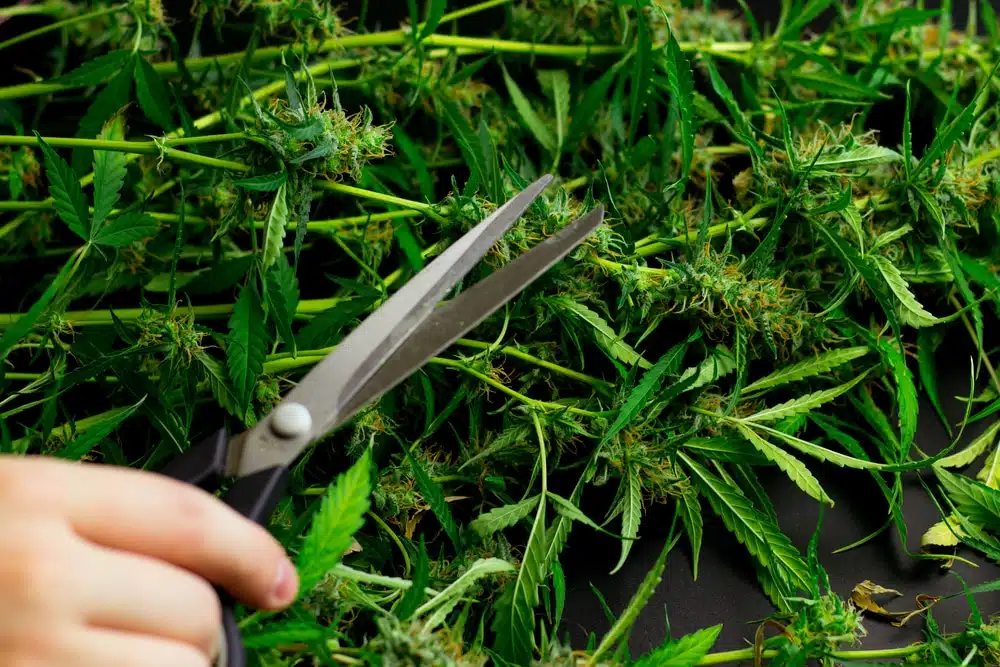
The different types of defoliation
You’re probably wondering how to trim cannabis fan leaves. The process is straightforward, as long as you ensure not to overstress the plant.
There are a few different types of pruning, from topping to mainlining. Understanding which method is easiest for you and most beneficial for your plant is crucial.
Topping
Topping refers to cutting off the central stalk of a cannabis plant, forcing it to grow horizontally. By becoming bushy, your cannabis crops produce larger yields.
Cultivators recommend topping your plant after it’s grown six or seven nodes. Usually, you would top just above the fifth node. It’s crucial to wait until the plant is fully developed for it to have the strength to withstand the stress of topping.
Lollipopping
Lollipopping helps your marijuana plants focus on developing more nugs. While it’s a simple technique, always be cautious to avoid overdoing it.
Begin by pruning away noticeable, large foliage near the bottom. Trim and remove branches without changing around 50% of the overall height of the plant.
Remove branches near the middle of the bush underneath the canopy. If you have any cannabis fan leaves turning yellow, this is your chance to remove them as well.
Mainlining
Mainlining your marijuana plant may result in larger yields. This process must occur in the early stages of growth, and you should do it only once or twice. Wait until your crops develop around 5–8 nodes. Ensure not to top early on as the plants may not recover.
Once the crop is ready, cut it down to the third node. Your plant should now have two large fan leaves branching in a Y-shape. Tie them down gently so as not to break or damage them.
With the created central manifold, the roots should now split nutrients between the two shoots. From here, remove the second node, having numbers one and three stay intact. Repeat on either side. From here on, let the plant grow to the flowering stage.
Schwazzing
Schwazzing is hit-or-miss. You may have larger yields, or cause the plant to die. We recommend using this method only if you have a hydroponic setup. The first step is to research which strain benefits most from this defoliating method.
Schwazzing is the basic process of trimming fan leaves. Ensure proper timing, quantity, and approach to avoid damaging the plant and removing vital nutrients. Use clean scissors to remove the larger fan leaves and allow more light penetration.
Schwazze twice during the flowering stage, generally on days 1 and 20. After day 20, schwazzing causes more harm than good.
What can fan leaves be used for?
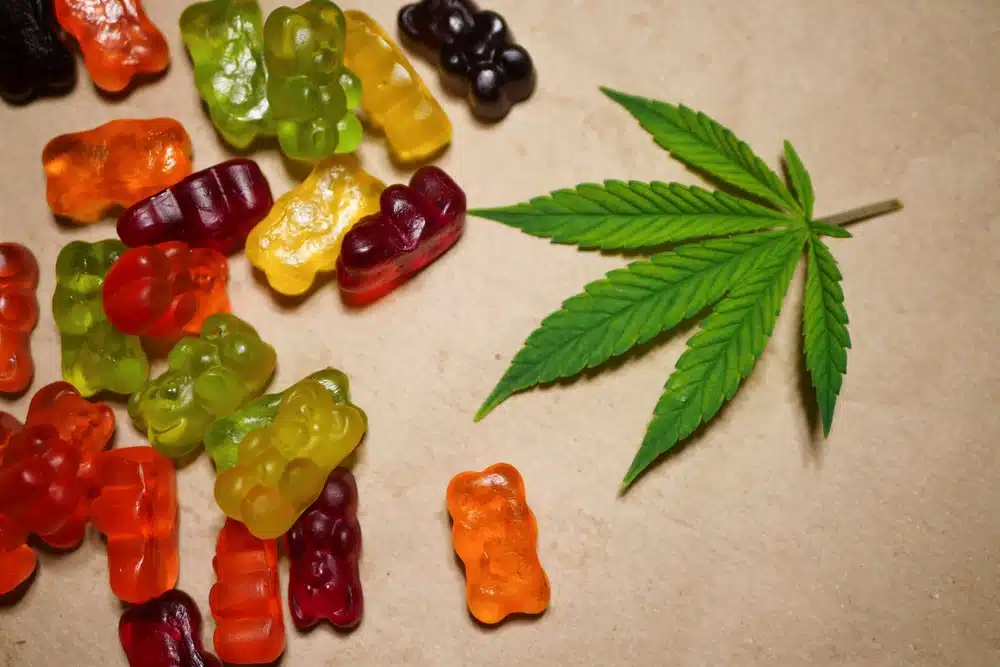
You may wonder now what to do with your leftover leaves. Here are a few ways you can use them:
- Topical extraction: Similarly to tea leaves, dried marijuana can be infused with other products such as coconut oil. Easily use excess fan leaves to make skin balms and creams.
- Compost pile: Fan leaves contain nutrients that are helpful to the marijuana plant. Using the excess leaves as compost feeds the crop from the soil.
- Teas: While you may or may not have the desired THC effects from the leaves, you might experience relaxation from brewing them into cannabis teas.
- Raw cannabis: You can use undried or heated leaves in juices or smoothies. You won’t necessarily get high from this, but cannabis is still filled with helpful nutrients.
FAQs about cannabis defoliation
Now that you know how to defoliate and what to do with cannabis fan leaves, you may have some leftover queries. Read further for the frequently asked questions about cannabis defoliation.
How can I tell that my cannabis crops need to be defoliated?
The main telltale sign that your cannabis crops need defoliating is if the higher-up leaves are blocking light to the lower ones. Remove these larger fan leaves to allow enough illumination and airflow to the smaller ones.
Cut away any leaves that you see growing inwards towards the main stem. If you notice any yellowing leaves, trim those off as well.
What’s the best time to defoliate?
The best time to defoliate your cannabis plant is after the third week of flowering. Remove fewer leaves if you’re a beginner cultivator to avoid over-defoliating.
Avoid trimming if the plant is recovering or suffering from pest infestation, over/under feeding, any diseases, or over/under watering. The extra stress may cause the crop to die or produce lower-quality buds.
Do plants need extra nutrients after defoliation?
If you practice cannabis plant defoliation techniques, you may need to feed your plants with additional nutrients. Since you’re stripping the leaves, where food is stored, the crops need extra supplements after being defoliated twice.
How does defoliation benefit the plant?
In the long run, defoliation should encourage larger yields. Other benefits include efficient light absorption, lower risk of pests and mold, and better ventilation.
How often should you remove fan leaves?
Pruning your plant is most often necessary during the vegetative stage. Keep an eye out for how big the fan leaves are growing throughout the cultivating journey. Determine whether the entire plant is receiving enough light and airflow.
Is it bad if you don’t defoliate?
The biggest issue with not defoliating is risking the lower leaves not receiving enough light and airflow. While it may not be detrimental, we recommend following the above steps to practice safe defoliation.
What are the best defoliation tools?
The best tools to remove fan leaves are sharp, clean garden shears. Have a few different sizes at your disposal to ensure precision.
Is it a good idea to defoliate autoflowers?
Not all marijuana plants qualify for defoliation. Autoflowering crops may not have the correct time to trim or prune, but it’s still an option. Ensure to be as careful as possible to avoid any lasting damage.
The down low
Trimming down the bright green leaves on your marijuana plant is a good idea if you want larger yields and healthier crops. Follow our straightforward steps to avoid overstressing and potentially causing damage to your plants.
You can use the leftover foliage in several ways, from ointments to teas and smoothies. Hold on to your chopped-off weed leaves to make the most of them and their trace amounts of THC content.
Are you curious about other ways to take care of your marijuana plant? Head over to our blog to find all the facts you need.

